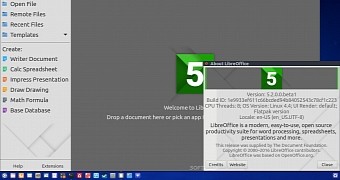The upcoming LibreOffice 5.2 open-source and cross-platform office suite has entered a new stage of development, and a first Beta release is now available for download on supported platforms.
However, GNU/Linux users who have support for the new Flatpak package on their distros are in for a treat, as a group of LibreOffice developers have started maintaining a Flatpak bundle for the upcoming office suite, for easy distribution on multiple operating systems, despite the default package format used.
For those of you not in the loop, Flatpak is a new package format created by the GNOME Project, initially called XDG-App. It is an alternative to the AppImage format, as well as Ubuntu's Snap packages. However, only Flatpak and AppImage bundles can be used on common GNU/Linux distributions, including Debian or Arch Linux.
Here's how to install the LibreOffice 5.2 Beta Flatpak package
Long story short, if you have support for the Flatpak package in your distro (if you don't, visit the official website of the project to install it on Debian GNU/Linux 8 "Jessie," Arch Linux, Fedora, Mageia, or Ubuntu), please download the LibreOffice 5.2 Beta Flatpak right now and follow the next instructions to install it.
First, you'll need to open a Terminal app and run the first set of commands below to add the Flatpak repository that contains the GNOME runtime to your distribution. Then, if everything was successfully installed, attempt to install and run the LibreOffice 5.2 Beta Flatpak package using the last set of commands below.
wget https://sdk.gnome.org/keys/gnome-sdk.gpg
flatpak remote-add --user --gpg-import=gnome-sdk.gpg gnome https://sdk.gnome.org/repo/
flatpak install --user gnome org.gnome.Platform 3.20
flatpak install --user --bundle LibreOffice.flatpak
flatpak run org.libreoffice.LibreOffice
For more details, please visit the official announcement.

 14 DAY TRIAL //
14 DAY TRIAL //